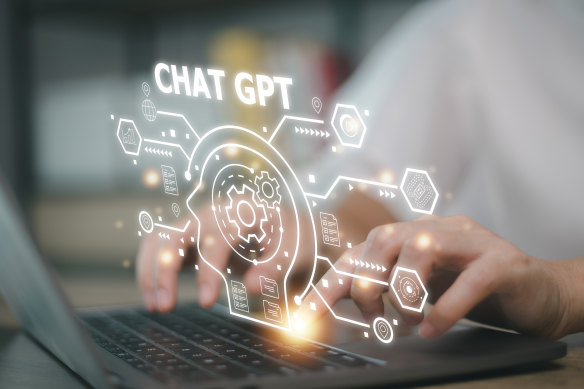
OpenAI, the creator of the popular chatbot ChatGPT, has released an “imperfect” software tool to identify text generated by artificial intelligence as worries grow in academic and teaching circles that its tools could enable widespread cheating.
It allows the start-up to sell to both sides of a burgeoning arms race that could extend beyond the classroom into people trying to spread, and detect, things such as online misinformation campaigns fuelled by AI-generated content.
Chat GPT is a language-processing AI model that is capable of generating human-like text, such as essays.Credit:iStock
ChatGPT is a free online tool that generates text in response to a prompt, including articles, essays, jokes and even poetry, which has gained wide popularity since its debut in November.
The AI classifier, a language model trained on the dataset of pairs of human-written and AI-written text on the same topic, aims to distinguish text that is written by AI. But OpenAI, which recently received a multibillion-dollar investment from Microsoft that industry publications said valued the firm at $US29 billion ($41 billion), has cautioned that its tool has a series of severe limitations.
In tests, OpenAI said its classifier correctly identified AI-written text 26 per cent of the time but described human-written passages as “likely AI-written" in 9 per cent of cases. It is also very unreliable on texts under 1000 characters and AI-written text can be edited to trick the classifier.
Jan Leike, head of OpenAI’s alignment team tasked to make its systems safer, warned that the system was not foolproof, telling AP the method for detecting AI-written text “is imperfect” and would sometimes be wrong.
“It shouldn’t be solely relied upon when making decisions,” Leike said.
Australian universities have reportedly flagged a greater use of traditional assessment types such as pen and paper tests to prevent students having ChatGPT write their essays for them. Many Australian schools, including public schools in NSW, have banned ChatGPT. But some Australian academics have called for students to be taught to work with AI as a tool they will likely encounter in the workplace.
There are several tools available already to detect AI text, with varying degrees of accuracy. An AI research group called Hugging Face has created one tool and Edward Tian, a Princeton researcher, created another called GPTZeroX.
Australian universities have reportedly flagged a greater use of traditional assessment types such as pen and paper tests to prevent students having ChatGPT write their essays for them.Credit:istock
OpenAI said in a blog post they were making their detection tool available in “beta” form to test whether it was useful.
“We recognise that identifying AI-written text has been an important point of discussion among educators, and equally important is recognising the limits and impacts of AI-generated text classifiers in the classroom.”
OpenAI said it is engaging with educators to discuss ChatGPT's capabilities and limitations, and will continue to work on the detection of AI-generated text.
with Reuters
Get news and reviews on technology, gadgets and gaming in our Technology newsletter every Friday. Sign up here.
Most Viewed in Technology
From our partners
Source: Read Full Article

